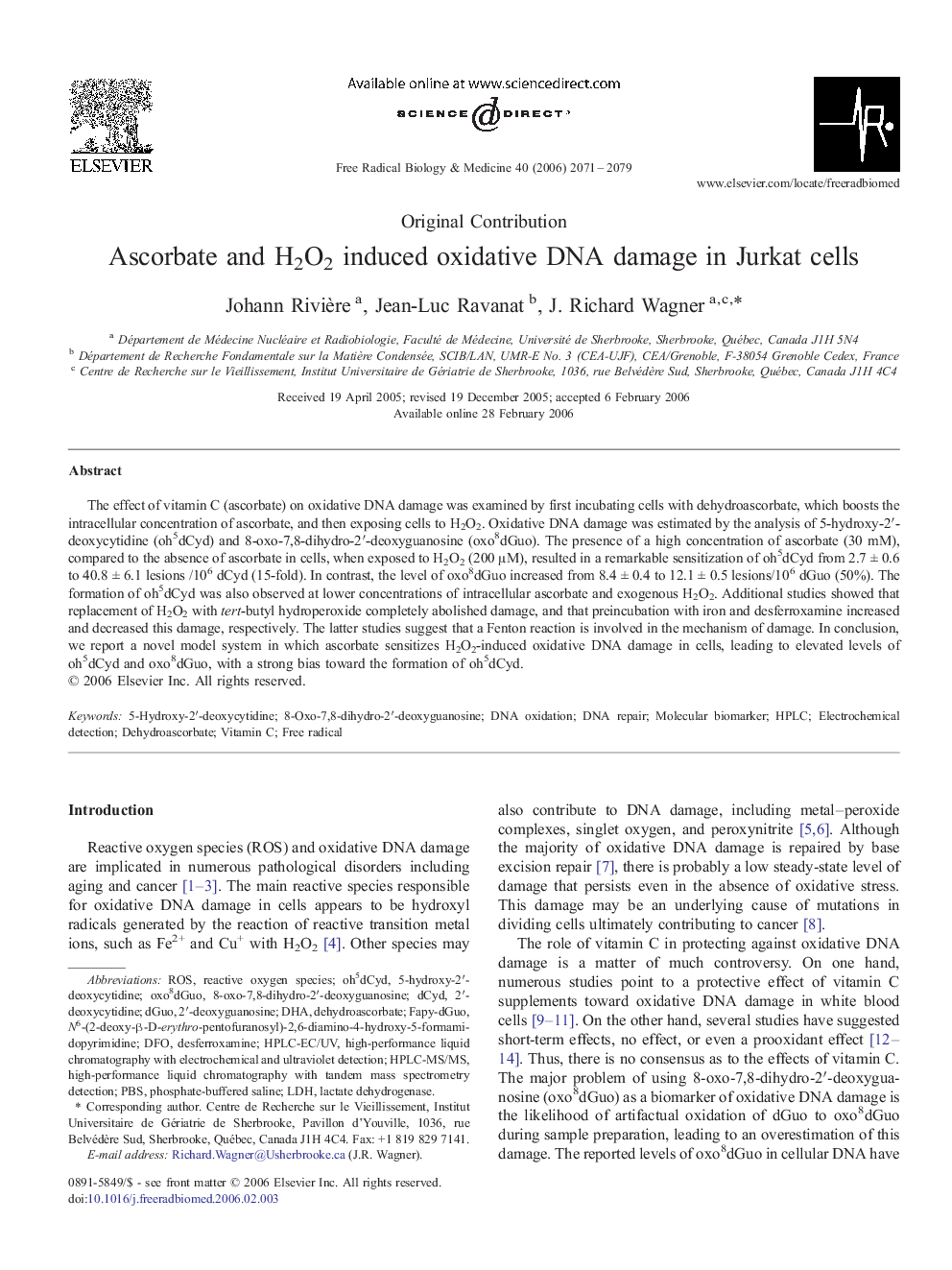| Article ID | Journal | Published Year | Pages | File Type |
|---|---|---|---|---|
| 1912123 | Free Radical Biology and Medicine | 2006 | 9 Pages |
Abstract
The effect of vitamin C (ascorbate) on oxidative DNA damage was examined by first incubating cells with dehydroascorbate, which boosts the intracellular concentration of ascorbate, and then exposing cells to H2O2. Oxidative DNA damage was estimated by the analysis of 5-hydroxy-2â²-deoxycytidine (oh5dCyd) and 8-oxo-7,8-dihydro-2â²-deoxyguanosine (oxo8dGuo). The presence of a high concentration of ascorbate (30 mM), compared to the absence of ascorbate in cells, when exposed to H2O2 (200 μM), resulted in a remarkable sensitization of oh5dCyd from 2.7 ± 0.6 to 40.8 ± 6.1 lesions /106 dCyd (15-fold). In contrast, the level of oxo8dGuo increased from 8.4 ± 0.4 to 12.1 ± 0.5 lesions/106 dGuo (50%). The formation of oh5dCyd was also observed at lower concentrations of intracellular ascorbate and exogenous H2O2. Additional studies showed that replacement of H2O2 with tert-butyl hydroperoxide completely abolished damage, and that preincubation with iron and desferroxamine increased and decreased this damage, respectively. The latter studies suggest that a Fenton reaction is involved in the mechanism of damage. In conclusion, we report a novel model system in which ascorbate sensitizes H2O2-induced oxidative DNA damage in cells, leading to elevated levels of oh5dCyd and oxo8dGuo, with a strong bias toward the formation of oh5dCyd.
Keywords
Related Topics
Life Sciences
Biochemistry, Genetics and Molecular Biology
Ageing
Authors
Johann Rivière, Jean-Luc Ravanat, J. Richard Wagner,
